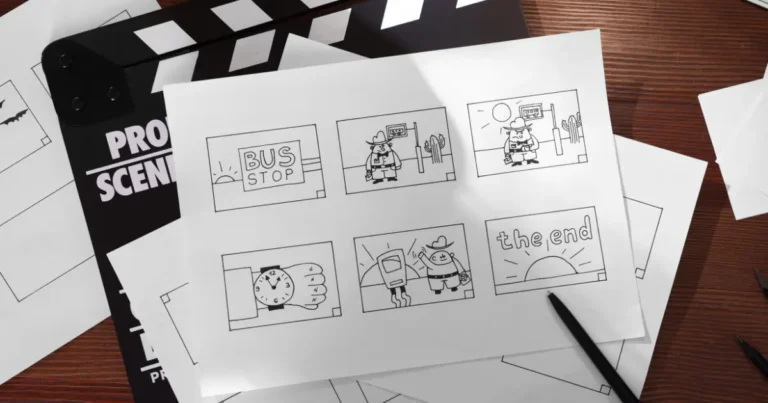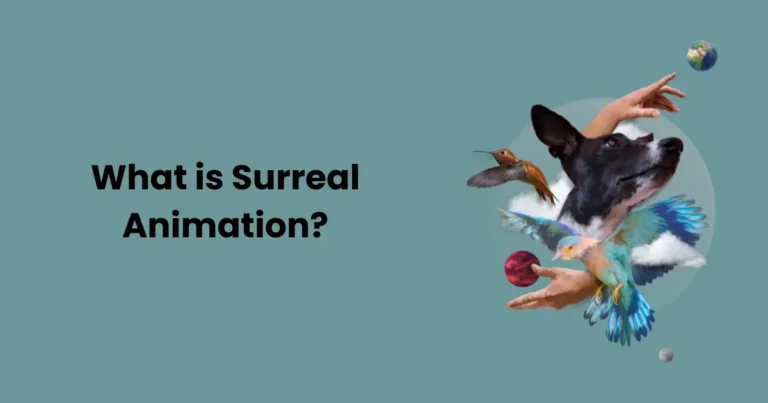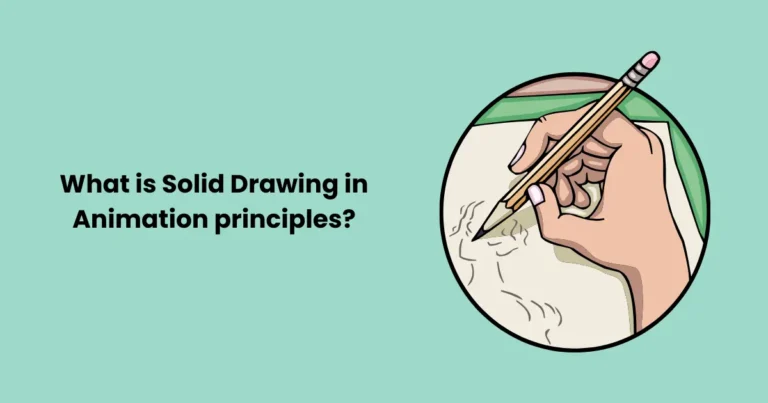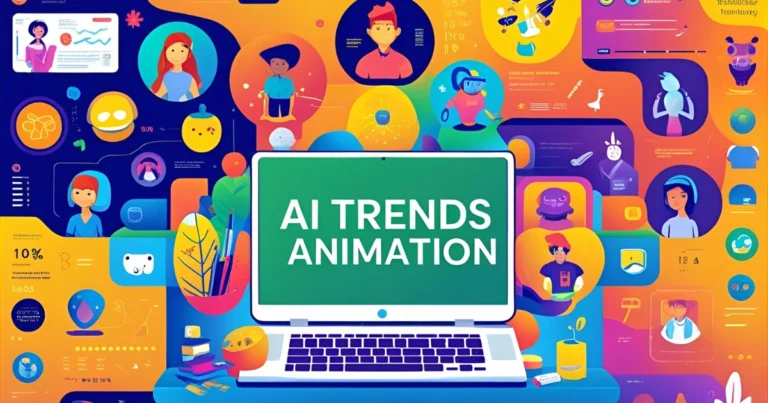Best guide to start Animation for Beginners Where do I start in 2025
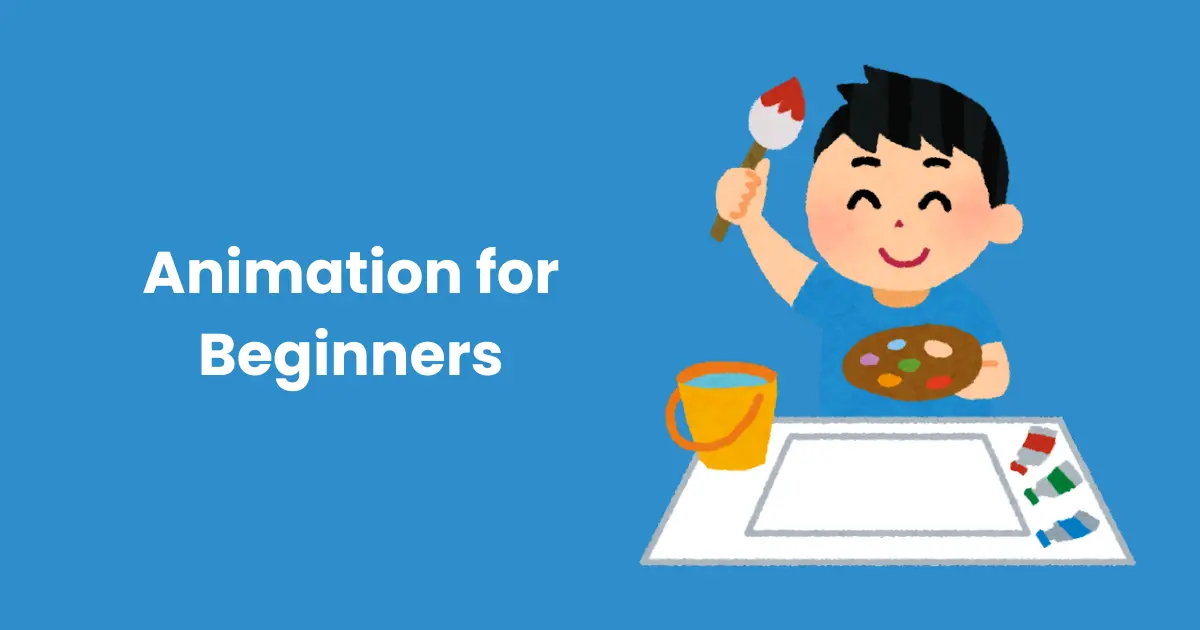
Contents
- 1 Types of Animation for Beginners
- 2 Tools and Software for Animation for Beginners
- 3 Basic Concepts in Animation for Beginners
- 4 Tips and Tricks for Animation for Beginners
- 4.1 1. Start with Simple Projects
- 4.2 2. Use Reference Material
- 4.3 3. Master the 12 Principles of Animation
- 4.4 4. Keep it Fluid with Timing and Spacing
- 4.5 5. Use Layers and Depth
- 4.6 6. Animate in “Chunks”
- 4.7 7. Don’t Forget About the “Weight” of Objects
- 4.8 8. Refine Your Poses and Keyframes
- 4.9 9. Don’t Rush the Process
- 4.10 10. Learn to Use Onion Skinning
- 4.11 11. Keep Practicing Regularly
- 4.12 Conclusion
Animation for beginners can be an exciting yet challenging journey into the world of visual storytelling. Whether you’re interested in creating animated movies, video games, or even social media content, animation offers endless possibilities for creativity. For those just starting, it’s important to understand the basics and gradually build your skills to bring your ideas to life.
This guide is designed to help you navigate through the essential concepts and tools of animation, providing a solid foundation for beginners. By learning the fundamental techniques, you’ll be able to start your animation journey and develop a unique style that resonates with your audience. So, whether you aim to become a professional animator or simply explore animation as a hobby, this article will equip you with the knowledge to get started on the right foot.
Types of Animation for Beginners
When starting in animation, it’s essential to understand the various types of animation that exist. Each type has its unique process, style, and requirements, making some more suitable for beginners than others. Here’s an overview of the most common types of animation for beginners:

1. 2D Animation
2D animation is one of the most accessible forms for beginners, as it involves creating movement by drawing images in a two-dimensional space. This type of animation can be hand-drawn or done digitally. Software like Adobe Animate, Toon Boom, and Pencil2D are popular tools for 2D animators.
2D animation is widely used in cartoons, web animations, and mobile games. As a beginner, you’ll start with basic techniques like creating keyframes, in-betweening, and working with timing to make your characters come to life. It’s an excellent starting point because it teaches fundamental animation principles that apply to other types of animation.
2. 3D Animation
3D animation is a more advanced form that involves creating characters, objects, and scenes in a three-dimensional space. While 3D animation may seem more complex, there are beginner-friendly tools like Blender, Autodesk Maya, and Cinema 4D that allow new animators to experiment with 3D modeling, rigging, and animation.
3D animation is commonly used in feature films, video games, and simulations. Beginners typically start by learning the basics of modeling and texturing, followed by animating characters and objects. While the learning curve can be steep, 3D animation offers immense creative opportunities and is a valuable skill for aspiring animators.
3. Stop Motion Animation
Stop motion animation involves photographing objects or characters frame by frame while manually adjusting their position between each shot. This type of animation can be done using clay, puppets, paper, or even everyday objects. Popular stop motion software includes Dragonframe and Stop Motion Studio.
For beginners, stop motion provides a hands-on, creative experience. It encourages you to develop patience and attention to detail as each frame is captured. Although the process is time-consuming, the results can be highly rewarding. Many beginners enjoy experimenting with stop motion because of its tangible, almost sculptural nature.
4. Motion Graphics
Motion graphics is another form of animation that focuses on the movement of graphic elements and text. It’s often used in advertisements, explainer videos, title sequences, and informational content. Tools like After Effects and Apple Motion are commonly used to create motion graphics.
For beginners, motion graphics can be a great entry point into the world of animation. It doesn’t require detailed character animation but focuses on creating visual effects and animated designs. Learning motion graphics can also serve as a stepping stone to other types of animation, offering a solid foundation in visual storytelling.
Each type of animation offers a unique experience, and as a beginner, exploring different methods will help you find the one that resonates most with you. Whether you choose 2D, 3D, stop motion, or motion graphics, understanding the core concepts and practicing consistently will help you improve your animation skills over time.
Tools and Software for Animation for Beginners
As a beginner, choosing the right tools and software is crucial for your animation journey. The right tools can help you learn efficiently and create high-quality animations. Here’s a guide to some of the best tools and software available for beginners in various types of animation.

1. Best 2D Animation Software
For beginners interested in 2D animation, there are a variety of user-friendly software options that provide the essential features needed to start animating.
- Pencil2D
Pencil2D is a free, open-source software that is perfect for beginners. It allows you to create traditional hand-drawn 2D animations and has a simple interface that’s easy to navigate. Pencil2D is great for learning basic principles like frame-by-frame animation and timing. - Adobe Animate
Adobe Animate is one of the most popular 2D animation software programs. While it offers more advanced features, its user-friendly interface and vast resources make it ideal for beginners who want to move beyond basic animation. You can create animations for web, games, and even interactive content with Adobe Animate. - Toon Boom Harmony
Toon Boom Harmony is widely used by professionals in the animation industry, but it’s also suitable for beginners. The software offers a wide range of tools for drawing, animating, and compositing. There are beginner-friendly versions with simplified features to help you get started before advancing to the more complex tools.
2. Best 3D Animation Software
3D animation has a steeper learning curve compared to 2D animation, but several beginner-friendly tools make the transition smoother.
- Blender
Blender is a powerful and free 3D animation software that’s perfect for beginners. It offers a comprehensive suite of tools for modeling, texturing, rigging, and animating. While it can initially seem overwhelming, there are plenty of tutorials and a large community of users to help you learn. Blender is ideal for beginners who want to explore 3D animation without the financial investment. - Autodesk Maya (Student Version)
Maya is one of the most widely used 3D animation software programs in the industry. While it’s more complex and might take time to master, Autodesk offers a free student version that gives beginners access to all of Maya’s features. Learning Maya can be valuable if you’re aiming for a career in professional animation or game development. - Cinema 4D
Cinema 4D is known for its intuitive interface and ease of use for beginners. It’s perfect for creating motion graphics and 3D animations. Although it’s not free, it offers a range of features for creating 3D characters, environments, and animations. Many beginners find Cinema 4D’s learning curve easier compared to other 3D animation software.
3. Stop Motion Animation Tools
Stop motion animation is a unique and creative process, and there are a few software options designed specifically for beginners in this field.
- Stop Motion Studio
Stop Motion Studio is a great tool for beginners looking to get started with stop motion animation. It’s simple to use, and it works on both mobile and desktop devices. With easy-to-use editing features, you can create smooth animations by capturing individual frames and adjusting the timing. - Dragonframe
Dragonframe is a professional stop motion software, but it also offers beginner-friendly features. It allows you to capture frames, adjust timing, and preview animations with ease. It’s perfect for those who want to dive into more advanced stop motion techniques once they’ve mastered the basics.
4. Motion Graphics Tools
Motion graphics involves animating graphic elements and text, and there are various tools that cater to this type of animation.
- Adobe After Effects
Adobe After Effects is the industry-standard software for creating motion graphics and visual effects. It may appear overwhelming for beginners at first, but it offers an intuitive learning curve and a wealth of online tutorials. With After Effects, beginners can easily animate text, logos, and other graphic elements, and it’s a perfect introduction to the world of motion graphics. - Apple Motion
Apple Motion is another motion graphics tool that’s more affordable than After Effects. It’s a great choice for beginners who are working on macOS. Motion offers a streamlined interface and easy-to-use tools for creating stunning motion graphics, visual effects, and 2D animations. - HitFilm Express
HitFilm Express is a free, feature-rich motion graphics and video editing software. It combines visual effects and editing tools in one platform, making it a great option for beginners looking to create motion graphics and visual effects. With an easy-to-navigate interface, it’s suitable for both animation and video editing.
Choosing the right software will depend on your animation goals and the type of animation you want to pursue. As a beginner, it’s a good idea to start with simpler, free tools and gradually move to more advanced software as you gain confidence. Whether you’re working in 2D, 3D, stop motion, or motion graphics, there’s a wealth of software available to help you create stunning animations.
Basic Concepts in Animation for Beginners
Before diving into the technical aspects of animation, it’s important for beginners to understand some fundamental concepts that form the backbone of animation. These core principles not only help in creating smooth and believable animations but also provide a foundation that can be applied across all animation types. Here are some key concepts that every beginner animator should know:

1. Keyframes
In animation, a keyframe marks the start or end of a specific action or movement. These frames define the most crucial points in an animation sequence, allowing animators to establish major poses or changes in motion. Once keyframes are set, in-between frames (or “tweens”) are used to fill in the gaps between them, creating a smooth transition from one keyframe to another.
Keyframes are essential for animating objects, characters, and even camera angles, and they act as the anchors that guide the flow of movement.
2. Frame Rate and Timing
Frame rate refers to the number of frames displayed per second (fps) in an animation. The more frames there are in each second, the smoother the animation appears. For instance, 24 fps is the standard frame rate for films and high-quality animations, while 12 fps can be used for a more stylized or rough animation. Beginners should experiment with different frame rates to understand how timing impacts the fluidity and pace of their animations.
Timing is another important aspect of animation that refers to how long a particular action or movement takes to unfold. Good timing makes the animation more realistic and expressive, as it reflects the natural speed of objects and characters. A slow movement, for example, would require more frames, while a fast action would require fewer frames.
3. Animation Principles
Several key principles of animation serve as the foundation for creating fluid, engaging animations. These principles were developed by Disney animators in the 1930s and are still widely used today. Here are a few essential principles that beginners should understand:
- Squash and Stretch
This principle gives objects and characters a sense of weight and flexibility. By exaggerating the compression and stretching of a character or object during a movement, animators can make the action appear more dynamic and natural. For example, when a character jumps, their body will stretch upwards as they rise and squash down when they land. - Anticipation
Anticipation prepares the audience for a big action, making it more believable. For example, before a character jumps, they might bend their knees slightly, indicating the direction and energy of the upcoming action. Anticipation helps create smoother transitions between actions and adds more excitement to the animation. - Follow Through and Overlapping Action
Follow-through refers to the continuation of an action after the main movement is completed. For example, a character’s hair might keep moving after they stop running. Overlapping action, on the other hand, occurs when different parts of a character’s body move at different rates. This principle makes movements feel more natural and lifelike. - Ease In and Ease Out
Ease In and Ease Out describe how movements start and finish. A smooth, natural movement generally begins slowly (ease in) and gradually speeds up, before slowing down again at the end (ease out). These subtle adjustments prevent movements from feeling too mechanical or abrupt. - Staging
Staging refers to how an animation’s action is framed within the scene, making sure that the audience’s attention is directed to the most important elements. Proper staging allows animators to highlight specific actions, emotions, or elements in the scene.
4. Types of Motion
Understanding different types of motion is essential for creating a convincing animation. Here are some common types of motion that beginners should be familiar with:
- Linear Motion
This is simple, straight-line movement where objects or characters move at a constant speed without acceleration or deceleration. Linear motion is often used for background elements or inanimate objects. - Arcs
Most natural movements occur along a curved path or arc. For example, when a character throws a ball, the ball will follow an arc before reaching its target. Understanding arcs helps create smoother, more realistic motion. - Secondary Action
Secondary action refers to the smaller, additional movements that complement the primary action. These actions can help convey more emotion and depth to the scene. For instance, if a character is walking, their arms or clothing might also move in response to the primary movement.
5. The 12 Principles of Animation
The 12 principles of animation, as mentioned earlier, form the core of creating believable and engaging animations. Mastering these principles is essential for beginners as they lay the groundwork for more advanced techniques. Here’s a quick rundown of the 12 principles:
- Squash and Stretch
- Anticipation
- Staging
- Straight Ahead Action and Pose to Pose
- Follow Through and Overlapping Action
- Slow In and Slow Out
- Arcs
- Secondary Action
- Timing
- Exaggeration
- Solid Drawing
- Appeal
Each of these principles has a specific role in improving the quality of an animation. By mastering them, beginners can create more dynamic, appealing, and realistic animations.
By understanding these basic concepts in animation, beginners can start to create more polished, engaging animations. These principles and techniques are not only essential for creating smoother, more believable movements but also help animators convey emotions and storytelling through their work. Whether you’re working in 2D or 3D, mastering these fundamentals will set you on the path to becoming a skilled animator.
Tips and Tricks for Animation for Beginners
Starting out in animation can be both exciting and overwhelming. As a beginner, there’s a lot to learn and many challenges to overcome, but with the right tips and tricks, you can improve your skills more effectively and efficiently. Here are some essential animation tips and tricks for beginners to help you get started on the right foot and accelerate your learning process:

1. Start with Simple Projects
As a beginner, it’s easy to get excited about creating a complex animation, but it’s important to start small. Begin with simple exercises that focus on basic animation principles. A bouncing ball, for example, is a classic exercise to practice squash and stretch, timing, and spacing.
Tip: Choose simple animations like a walk cycle or a character blinking. This helps you focus on mastering key animation techniques without feeling overwhelmed.
2. Use Reference Material
Even the most experienced animators use reference material to guide their work. Observing real-life movement or referencing videos can significantly improve the believability of your animations. When animating human characters or animals, watch how they move in real life or in other animations to ensure your animation feels natural.
Tip: Record yourself performing actions (like walking or jumping) and use that footage as a reference for your animations. This will help you understand the flow and timing of movements.
3. Master the 12 Principles of Animation
The 12 principles of animation, developed by Disney animators, are the foundation of great animation. These principles, such as squash and stretch, anticipation, and timing, should be the first thing you study and implement. They will help you create more engaging, realistic, and dynamic animations.
Tip: Focus on mastering a few principles at a time. For instance, begin with squash and stretch or timing, and then gradually incorporate others into your work.
4. Keep it Fluid with Timing and Spacing
Good timing and spacing are crucial to making your animations feel smooth and believable. Focus on how objects or characters accelerate and decelerate during movements. For example, in a jump, the character’s movement will start slowly (ease-in), speed up mid-air, and slow down when landing (ease-out).
Tip: Use “slow in” and “slow out” to make actions more natural. This technique helps ease into and out of movements, making them feel more organic.
5. Use Layers and Depth
Especially in 2D animation, using layers effectively can add depth and dimension to your scenes. Separate the foreground, middle ground, and background to give the illusion of depth. This is also important when animating characters, props, and backgrounds, ensuring they move in a way that feels cohesive.
Tip: In software like Adobe Animate or Toon Boom, use layers to separate different elements. This helps manage complex animations and gives the illusion of depth in your scenes.
6. Animate in “Chunks”
Don’t feel pressured to animate every single frame at once. Break your animation into chunks or major movements (also known as key poses). Once the key poses are in place, you can fill in the in-between frames later, refining and adding detail.
Tip: Use “pose-to-pose” animation instead of animating frame-by-frame. Create the key poses first, then add in-betweens. This method helps maintain a clear structure for your animation.
7. Don’t Forget About the “Weight” of Objects
Objects in motion should feel like they have weight, especially when animated. For instance, a heavy object like a rock should move more slowly and with more force compared to a lighter object like a balloon. Adding weight to your animations will make them feel more realistic.
Tip: When animating heavier objects, use squash and stretch to emphasize the impact. For lighter objects, keep movements quick and smooth to reflect their weightlessness.
8. Refine Your Poses and Keyframes
The strength of an animation lies in the key poses. Make sure your keyframes are strong, dynamic, and clear in conveying the action or emotion. Weak poses can lead to poor animation, so focus on getting these right from the start.
Tip: Use the “Silhouette Test” to check if your poses are clear and readable. If the pose looks good in a simple black silhouette, it’s likely a strong pose.
9. Don’t Rush the Process
Animation is time-consuming, especially when you’re just starting out. Rushing through the process can lead to errors and frustration. Take your time to get each frame, pose, and movement right. Slow and steady progress will ultimately result in better quality animation.
Tip: Set realistic deadlines for yourself. Break your project into smaller tasks (like creating keyframes, adding in-betweens, and refining details) and focus on one step at a time.
10. Learn to Use Onion Skinning
Most animation software has a feature called onion skinning, which lets you see previous and upcoming frames as faint outlines. This feature is invaluable for maintaining consistency between frames and ensuring smooth transitions between movements.
Tip: Always use onion skinning when creating in-between frames to help you maintain the correct spacing and timing from one frame to the next.
11. Keep Practicing Regularly
Animation, like any other skill, requires consistent practice. The more you animate, the better you’ll become. Don’t be discouraged by setbacks, and keep pushing forward. Even if you create simple exercises, it will help build your confidence and refine your skills over time.
Tip: Set aside time each day or week to practice animation. Even working on small projects or daily animation challenges will help you improve faster.
By following these tips and tricks, beginners can avoid common pitfalls and improve their animation skills more quickly. Remember, animation takes time, patience, and practice. Don’t rush, stay consistent, and enjoy the process of bringing your ideas to life!
Conclusion
Animation for beginners can feel overwhelming at first, but with the right mindset and dedication, it becomes a rewarding and fulfilling journey. By starting with simple projects, mastering basic principles like timing and spacing, and consistently practicing, you’ll gradually build your skills and confidence. Remember, animation is a process that requires patience, creativity, and a willingness to learn from both successes and mistakes. The more you animate, the more you’ll understand how to make your movements come to life, whether it’s through 2D, 3D, or stop-motion techniques.
As you continue your animation journey, it’s important to keep exploring new tools, software, and techniques to expand your creative possibilities. Don’t be afraid to experiment and take risks, as animation offers endless opportunities to express ideas and tell stories in unique ways. Whether you’re working on a small personal project or aiming to break into the professional world, persistence and practice will be your greatest allies. Keep pushing forward, seek feedback, and most importantly, enjoy the creative process as you bring your ideas to life through animation.

